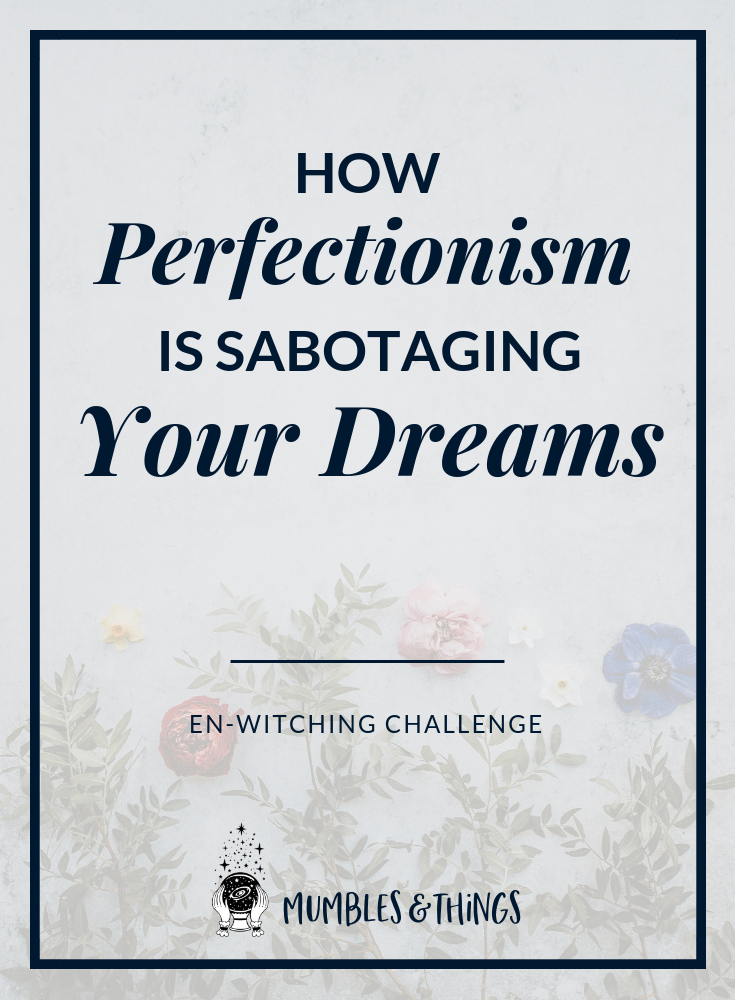What is Cultural Appropriation? Part 1
You’re in the right place if you…
are curious about what cultural appropriation is
want to learn how to practice witchcraft with the least amount of harm to others
like reading about contentious or touchy subjects ;)
This is a touchy subject, not that I’m afraid to talk about it. It may take you to a dark place in yourself. It may make you angry with me because I might present ideas that feel uncomfortable. You may feel personally attacked as you are forced to reflect on your own actions.
But please, hear me out and stick with me until the end.
I am not attacking you on a personal level. I struggle with some of these things myself. I am simply bringing to light an issue that is prevalent in the witchcraft and pagan community. This is an important topic, it’s highly contentious in our community, and it’s essential to talk about.
Witchcraft: a History
Many of today’s forms of Witchcraft have roots in the 19th century occult revival. During this period, European intellectuals took religious inspiration from several sources, including the religious practices of other cultures. These individuals shared the Imperialist worldview prevalent at the time.
Imperialism was the rapid expansion of European civilizations across the globe. This expansion resulted in the elimination and oppression of countless people, tribes, cities, and nations. The Imperialists took without thought, and these teaching have trickled down and have been watered down over time.
What is Cultural Appropriation?
Let me begin this by saying that Cultural Appropriation means different things to different people. Also, the people most often accused of appropriating culture in the witchcraft community are solitary eclectic witches. This is why it’s so important to talk about and think about: you will, at some point, likely be accused of appropriation.
Let’s try to narrow down what cultural appropriation is. The wikipedia definition is…
“Cultural appropriation is the adoption or use of elements of one culture by members of another culture. Cultural appropriation is seen by some as controversial, notably when elements of a minority culture are used by members of the cultural majority; this is seen as wrongfully oppressing the minority culture or stripping it of its group identity and intellectual property rights.”
Basically, it involves people of dominant groups exploiting the culture of less privileged groups.
In a non-witchcraft setting it’s when a black woman is called unprofessional or is even fired for wearing her hair in dreads or braids or natural styles for her hair texture but a white woman is called edgy or trendsetting.
In the witchcraft community there are many traditions eclectic witches borrow from that are considered closed, smudging is one example, the idea of a totem, Voodooism, and more.
The reasoning or motivation behind this “borrowing” or appropriating are often well-intended: “we’re reclaiming the word witch,” “witchcraft is about using whatever works,” or, “the gods have called me”.
But sometimes the intention doesn’t justify the act. Context matters.
All too often certain traditions are used as part of identifying certain cultures as “Other”, while framing the dominant culture as normative.
It’s offensive and damaging to share the privilege of belonging to the group of “oppressor” while at the same time picking apart traditions and practices for their approved, “exotic”, parts. We don’t get to show love for some aspects of a culture while remaining prejudiced against the people of that culture!
The other problem with cultural appropriation is that by only showcasing parts of these cultures, and presenting them in a way that is comfortable for the dominant group to accept, we inevitably portray those marginalized cultures inaccurately or one-dimensionally.
Exchange and Assimilation
Cultural exchange and cultural assimilation are other ideas that comes up in the cultural appropriation conversation. These are different. Cultural exchange involves a power dynamic where both groups are equal. Cultural assimilation involves a marginalized group adopting elements of a dominant culture in order to live with less discrimination.
These power dynamics are what makes it impossible to appropriate from the culture of the dominant group.
Why are we talking about this?
My position on this topic has shifted many times over my life, even before witchcraft. I think it’s okay, or even good, to have shifting viewpoints on these types of controversial issues, because it means you’re thinking. You’re allowing new insights to enter your worldview and adapting so that you do your best not to harm others.
Many people don’t even bother to think about how their actions effect others, so thinking and being willing to evolve is really a trait of strong and intelligent folks.
So here I am, a Witch of European descent: I was born with the privilege that comes from this heritage. My ancestral history and the modern societal benefits that flow from this don’t make me a bad person. But being a responsible and compassionate individual does require me to acknowledge it.
I recognize that my position on cultural appropriation is coming from a place of privilege because I have never dealt with discrimination for what I wore, what I ate, what I did, based on the color of my skin. I also recognize that my perspective is likely unnecessary and I may be shouting into the void. But there may be a chance I am shouting in the right direction, therefore, I am choosing to use my privilege and my platform to discuss issues of cultural appropriation in an effort to bring this issue into the light.
Related: Check your Privilege
Some things to think about…
These are some things I have drawn the line at for myself. But I’m still learning and I’m sure this list will continue to grow and change as I do.
1. Wearing a culture as a costume
Costumes are taken out of the context of the culture, they don’t offer the nuance of the entire culture, they remove the spiritual roots of a culture. Before putting on a costume ask yourself these questions:
Funny costume - Is the humor based on “making fun” of real people, human traits or cultures?
Historical costume - If this costume is meant to be historical, does it further misinformation or historical and cultural inaccuracies?
‘Cultural’ costume - Does this costume reduce cultural differences to jokes or stereotypes?
‘Religious’ costume - Does this costume mock or belittle someone’s deeply held faith tradition?
2. Reading a book about a culture written by someone outside of that culture
There are so many books written from an outside perspective that miss the mark when describing a culture.
Along the same lines, it’s important to purchase crafts and arts from a person within the culture before someone outside the culture. Oftentimes, the work of minority artists is stolen, reproduced and sold at a higher price by members of the dominant culture. There are people whose livelihoods depend on selling cultural clothing, cultural crafts, etc. in festivals and craft fairs. This is how their work gets the recognition and appreciation it deserves.
3. Using the offensive slurs
GYpsy is one slur in particular that we come across in the witchcraft community. Romani or Roma is the proper name to use instead of the g-slur when talking about the people. But most of the time this word is not used to talk about the people of this culture. It is often used as a synonym for boho, hippie, fashionable, interesting, or wanderlust. But it doesn’t mean these things and there is no “positive” or “acceptable” way of using it.
Romani culture doesn’t necessarily have anything to do with witchcraft, the culture is more than just the stereotype of the mystical tarot or palm reader, and crystal balls. There is horrible racism against Romani people in Europe that has spread to America and Canada, involving housing, education and health care discrimination, forced sterilization, police brutality and more.
If you are not of this culture, it’s time to take the word “G*psy” out of your vocabulary as well as the term “g*pped”.
4. Participating in a closed culture without going through the proper initiation process
An example of this is the practice of smudging. Smudging is a ceremonial and traditional Native American cleansing ritual. It is done to prepare a space or a person for a spiritual ritual or ceremony, or the arrival of spiritual leaders and elders into a sacred space. The burning of herbs like white sage, cedar, sweetgrass and lavender, is often accompanied by chanting, singing, fervent prayer and sometimes musical instruments.
The particular herbs and techniques will vary from tribe to tribe and clan to clan, which is why the method is often passed down from family members. But, if you are not Native and have not been taught by family/clan/tribe members, you are not smudging. This is because Native religions and cultures are closed to outsiders/non-natives.
Now you might be saying, “But Maggie! Smudging is so important to my practice! What will I do without it?” If you haven’t been initiated into this practice, what you are doing is actually called smoke cleansing. Smoke cleansing is the burning of purifying herbs to cleanse an area. Many cultures all over the world use smoke for cleansing people and spaces, and have their own techniques and specific herbs they prefer.
Smudging is a term that refers specifically to the religious ritual in nearly all Native American tribal cultures. Because of centuries of Native American cultural oppression many of the original terms for rituals and important spiritual aspects of their cultures have been lost. So, they are reclaiming the English words used for them.
Another English word Native American’s reclaimed is the term “spirit animals.” Yes, many other cultures have some form of animism. In fact, I can’t think of a culture that doesn’t have some form of animism. There are the Chinese Zodiac animals, there are the animal familiars of the Greek muses, even Jesus is known as, “The Lamb.” It goes back to ancient African stories of the shaman called “Mantis”. But, while the idea of a spirit animal is not solely a Native thing, this phrase is still considered appropriative.
There are alternatives to this term though, it’s so easy to just change our vocabulary to respect the voices of minority groups. Use language like ‘animal teacher’, ‘patronus’, ‘daemon’, ‘familiar’, ‘inner animal’, or ‘animal helper’ instead.
On another note, “Totem” is a unique Ojibwe or Chippawe word, and should only be used by those of this culture.
Some other examples of closed cultures include Voodooism. Voodooists prefer people to not engaging in their practices at all unless you are committed solely to it.
5. Profiting off of another culture without acknowledging the origin
Cultural appropriation is extremely important in discussing privilege. For example, a flamenco dance instructor who is white and gets recognition and money off this dance which was made by the Romani people. If they have zero recognition for the Roma and even worse discriminate against the Roma people while benefitting from their culture, they are in the wrong.
Another example is the white person who charges $200 per person for sweatlodge workshops without any recognition for Native people, and without even inviting Natives to the workshops so that they get to show their culture to others. Or, when an Indian woman who teaches her henna art to a white woman and that white woman turns around and begins selling that art for more money and more recognition, this is also problematic.
It is especially important to pay attention to cultural appropriation when there is a monetary gain. When privileged people make money off the knowledge and practices of people who have been oppressed for centuries. And when they do not recognize their struggles or give back to the community from which they are benefiting.
6. Using a word without fully understanding what it means
There are some who say talking about Karma is appropriative. But, I personally believe the use of the term without an understanding of what it means is appropriative. Like, when someone says, “Karma’s a bitch,” or when someone says, "Cursing leads to bad karma.”
That said, is it so hard to shift our words to something that conveys the same idea but won’t be consider appropriative? Why not use the phrase cosmic justice? Or the law of cause and effect for that matter?
What are we really angry about?
So, if you have never heard of cultural appropriation, let what I just said sink in and reflect on what this means. If you are new to thinking about your privilege or your role in structural oppression in this world, take a break.
If you understand imperialism, colonization, white supremacy, classism, etc. tune in for the second part where we can have a more nuanced discussion on this topic: What is at the heart of cultural appropriation?
Continue your journey and share your experiences on the Mumbles and Things Facebook page.
There is a group on Facebook and it was made for you. It is a safe and supportive place for New Age* practitioners to gather and grow their personal power while encouraging one another.
If you are a newbie hoping to learn how to become a witch or are experienced and would like to learn from like-minded folks, this group is for you.
*Metaphysical, Pagan, New Age, Lightworkers, Energy Workers, Shamans, Wiccan, Neo-Pagan, Witches, Angel Workers, Healers, Psychics, Spiritualists, and so many others fall under the umbrella of "New Age."
Join the Community Group.
Now it’s your turn!
How do we respectfully exchange with other spiritual cultures? What are we giving in exchange for the knowledge that we gain and use for our own spiritual experiences? How can we respect the context, culture, history and people of the cultures we are exchanging with?

























